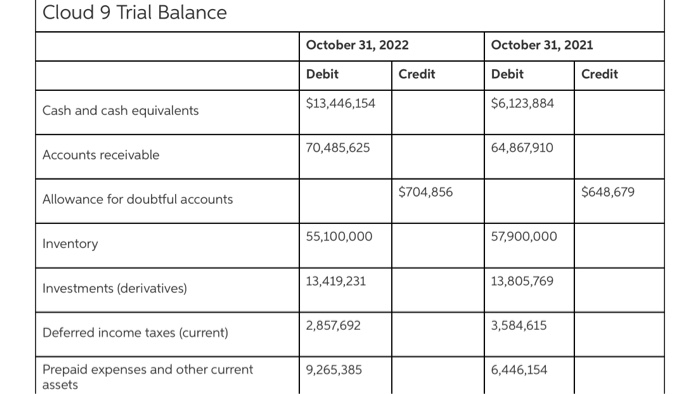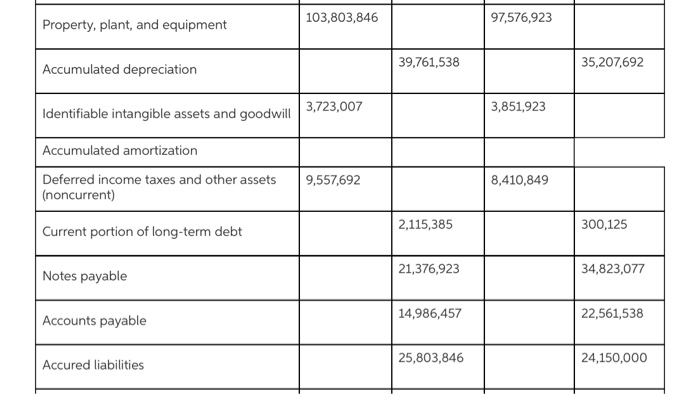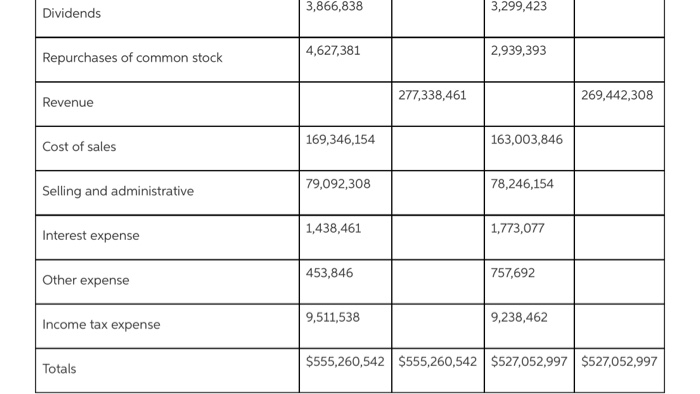Answered step by step
Verified Expert Solution
Question
1 Approved Answer
Only part c and d. Thank you. Cloud 9 - Continuing Case Answer the following questions based on the information for Cloud 9 presented in
Only part c and d. Thank you. 



 Cloud 9 - Continuing Case Answer the following questions based on the information for Cloud 9 presented in the appendix to this text and the current and earlier chapters. You should also consider your answers to the case study questions in earlier chapters. The following information focuses on evaluating inherent risk, control risk and detection risk for purchase transactions and accounts payable. Required a. After reviewing the trial balance, calculate the following ratios for Cloud 9 as of 1/31/2021, 1/31/2022, and 10/31/2022: 1. Accounts payable turnover in days (use ending balance rather than average balance for accounts payable). 2. Cost of goods sold to average accounts payable. 3. Payables as a % of total assets. 4. Current ratio. 5. Any other ratios and information that you believe would be appropriate to evaluating inherent risk for purchase transactions and accounts payable balances. b. Based on your analysis of information gathered: 1. Identify high inherent risk assertions for purchases transactions and accounts payable. 2. Evaluate inherent risk for purchase transactions and accounts payable. Explain why you have identified various assertions as high or maximum risk for accounts payable. c. Analyze and draw conclusions about the nature and extent of tests of controls: 1. For each assertion that you identify as high or maximum inherent risk, identify an internal control, or a combination of internal controls, that would control that risk. 2. Explain the nature and extent of tests of controls you would need to perform to assess control risk as low, for the controls you identified in (C)1 above. d. Analyze and draw conclusions about the nature, timing, and extent of substantive procedures: 1. Given your conclusions about inherent risk and assuming that tests of controls show that internal controls are effective, what are your conclusions about detection risk for the assertions identified as high or maximum inherent risk? Explain your conclusions. 2. For the assertions you identified as high or maximum inherent risk, what is the substantive procedure you would suggest performing (nature of the test)? Explain your conclusions. 3. For the assertions you identified as high or maximum inherent risk, when do you suggest performing the substantive procedure timing of the test)? Explain your conclusions. 4. For the assertions you identified as high or maximum inherent risk, how extensively should the auditor test these assertions (extent of the test)? Explain your conclusions, Cloud 9 Trial Balance October 31, 2022 Debit Credit October 31, 2021 Debit Credit Cash and cash equivalents $13,446,154 $6,123,884 70,485,625 Accounts receivable 64,867,910 Allowance for doubtful accounts $704,856 $648,679 55,100,000 57,900,000 Inventory 13,419,231 Investments (derivatives) 13,805,769 Deferred income taxes (current) 2,857,692 3,584,615 Prepaid expenses and other current assets 9,265,385 6,446,154 103,803,846 97,576,923 Property, plant, and equipment 39,761,538 35,207,692 Accumulated depreciation Identifiable intangible assets and goodwill 3,723,007 3,851,923 Accumulated amortization Deferred income taxes and other assets (noncurrent) 9,557,692 8,410,849 Current portion of long-term debt 2,115,385 300,125 Notes payable 21,376,923 34,823,077 Accounts payable 14,986,457 22,561,538 25,803,846 24,150,000 Accured liabilities 2,211,539 3,726,923 Income taxes payable 23,661,538 17,119,106 Long-term debt Deferred income taxes and other liabilities (noncurrent) 4,915,384 4,330,769 111,538 107,692 Common stock at par value Capital stock in excess of par value 19,415,385 16,484,615 Unearned stock compensation 253,846 480,769 Accumulated other comprehensive income 5,011,538 4,746,154 Beginning retained earnings 122,857,692 98,150,473 3,299,423 Dividends 3,866,838 3,866,838 3,299,423 Dividends Repurchases of common stock 4,627,381 2,939,393 Revenue 277,338,461 269,442,308 169,346,154 163,003,846 Cost of sales 79,092,308 Selling and administrative 78,246,154 1,438,461 Interest expense 1,773,077 Other expense 453,846 757,692 9,511,538 9,238,462 Income tax expense Totals $555,260,542 $555,260,542 | $527,052,997 $527,052,997 Cloud 9 - Continuing Case Answer the following questions based on the information for Cloud 9 presented in the appendix to this text and the current and earlier chapters. You should also consider your answers to the case study questions in earlier chapters. The following information focuses on evaluating inherent risk, control risk and detection risk for purchase transactions and accounts payable. Required a. After reviewing the trial balance, calculate the following ratios for Cloud 9 as of 1/31/2021, 1/31/2022, and 10/31/2022: 1. Accounts payable turnover in days (use ending balance rather than average balance for accounts payable). 2. Cost of goods sold to average accounts payable. 3. Payables as a % of total assets. 4. Current ratio. 5. Any other ratios and information that you believe would be appropriate to evaluating inherent risk for purchase transactions and accounts payable balances. b. Based on your analysis of information gathered: 1. Identify high inherent risk assertions for purchases transactions and accounts payable. 2. Evaluate inherent risk for purchase transactions and accounts payable. Explain why you have identified various assertions as high or maximum risk for accounts payable. c. Analyze and draw conclusions about the nature and extent of tests of controls: 1. For each assertion that you identify as high or maximum inherent risk, identify an internal control, or a combination of internal controls, that would control that risk. 2. Explain the nature and extent of tests of controls you would need to perform to assess control risk as low, for the controls you identified in (C)1 above. d. Analyze and draw conclusions about the nature, timing, and extent of substantive procedures: 1. Given your conclusions about inherent risk and assuming that tests of controls show that internal controls are effective, what are your conclusions about detection risk for the assertions identified as high or maximum inherent risk? Explain your conclusions. 2. For the assertions you identified as high or maximum inherent risk, what is the substantive procedure you would suggest performing (nature of the test)? Explain your conclusions. 3. For the assertions you identified as high or maximum inherent risk, when do you suggest performing the substantive procedure timing of the test)? Explain your conclusions. 4. For the assertions you identified as high or maximum inherent risk, how extensively should the auditor test these assertions (extent of the test)? Explain your conclusions, Cloud 9 Trial Balance October 31, 2022 Debit Credit October 31, 2021 Debit Credit Cash and cash equivalents $13,446,154 $6,123,884 70,485,625 Accounts receivable 64,867,910 Allowance for doubtful accounts $704,856 $648,679 55,100,000 57,900,000 Inventory 13,419,231 Investments (derivatives) 13,805,769 Deferred income taxes (current) 2,857,692 3,584,615 Prepaid expenses and other current assets 9,265,385 6,446,154 103,803,846 97,576,923 Property, plant, and equipment 39,761,538 35,207,692 Accumulated depreciation Identifiable intangible assets and goodwill 3,723,007 3,851,923 Accumulated amortization Deferred income taxes and other assets (noncurrent) 9,557,692 8,410,849 Current portion of long-term debt 2,115,385 300,125 Notes payable 21,376,923 34,823,077 Accounts payable 14,986,457 22,561,538 25,803,846 24,150,000 Accured liabilities 2,211,539 3,726,923 Income taxes payable 23,661,538 17,119,106 Long-term debt Deferred income taxes and other liabilities (noncurrent) 4,915,384 4,330,769 111,538 107,692 Common stock at par value Capital stock in excess of par value 19,415,385 16,484,615 Unearned stock compensation 253,846 480,769 Accumulated other comprehensive income 5,011,538 4,746,154 Beginning retained earnings 122,857,692 98,150,473 3,299,423 Dividends 3,866,838 3,866,838 3,299,423 Dividends Repurchases of common stock 4,627,381 2,939,393 Revenue 277,338,461 269,442,308 169,346,154 163,003,846 Cost of sales 79,092,308 Selling and administrative 78,246,154 1,438,461 Interest expense 1,773,077 Other expense 453,846 757,692 9,511,538 9,238,462 Income tax expense Totals $555,260,542 $555,260,542 | $527,052,997 $527,052,997
Cloud 9 - Continuing Case Answer the following questions based on the information for Cloud 9 presented in the appendix to this text and the current and earlier chapters. You should also consider your answers to the case study questions in earlier chapters. The following information focuses on evaluating inherent risk, control risk and detection risk for purchase transactions and accounts payable. Required a. After reviewing the trial balance, calculate the following ratios for Cloud 9 as of 1/31/2021, 1/31/2022, and 10/31/2022: 1. Accounts payable turnover in days (use ending balance rather than average balance for accounts payable). 2. Cost of goods sold to average accounts payable. 3. Payables as a % of total assets. 4. Current ratio. 5. Any other ratios and information that you believe would be appropriate to evaluating inherent risk for purchase transactions and accounts payable balances. b. Based on your analysis of information gathered: 1. Identify high inherent risk assertions for purchases transactions and accounts payable. 2. Evaluate inherent risk for purchase transactions and accounts payable. Explain why you have identified various assertions as high or maximum risk for accounts payable. c. Analyze and draw conclusions about the nature and extent of tests of controls: 1. For each assertion that you identify as high or maximum inherent risk, identify an internal control, or a combination of internal controls, that would control that risk. 2. Explain the nature and extent of tests of controls you would need to perform to assess control risk as low, for the controls you identified in (C)1 above. d. Analyze and draw conclusions about the nature, timing, and extent of substantive procedures: 1. Given your conclusions about inherent risk and assuming that tests of controls show that internal controls are effective, what are your conclusions about detection risk for the assertions identified as high or maximum inherent risk? Explain your conclusions. 2. For the assertions you identified as high or maximum inherent risk, what is the substantive procedure you would suggest performing (nature of the test)? Explain your conclusions. 3. For the assertions you identified as high or maximum inherent risk, when do you suggest performing the substantive procedure timing of the test)? Explain your conclusions. 4. For the assertions you identified as high or maximum inherent risk, how extensively should the auditor test these assertions (extent of the test)? Explain your conclusions, Cloud 9 Trial Balance October 31, 2022 Debit Credit October 31, 2021 Debit Credit Cash and cash equivalents $13,446,154 $6,123,884 70,485,625 Accounts receivable 64,867,910 Allowance for doubtful accounts $704,856 $648,679 55,100,000 57,900,000 Inventory 13,419,231 Investments (derivatives) 13,805,769 Deferred income taxes (current) 2,857,692 3,584,615 Prepaid expenses and other current assets 9,265,385 6,446,154 103,803,846 97,576,923 Property, plant, and equipment 39,761,538 35,207,692 Accumulated depreciation Identifiable intangible assets and goodwill 3,723,007 3,851,923 Accumulated amortization Deferred income taxes and other assets (noncurrent) 9,557,692 8,410,849 Current portion of long-term debt 2,115,385 300,125 Notes payable 21,376,923 34,823,077 Accounts payable 14,986,457 22,561,538 25,803,846 24,150,000 Accured liabilities 2,211,539 3,726,923 Income taxes payable 23,661,538 17,119,106 Long-term debt Deferred income taxes and other liabilities (noncurrent) 4,915,384 4,330,769 111,538 107,692 Common stock at par value Capital stock in excess of par value 19,415,385 16,484,615 Unearned stock compensation 253,846 480,769 Accumulated other comprehensive income 5,011,538 4,746,154 Beginning retained earnings 122,857,692 98,150,473 3,299,423 Dividends 3,866,838 3,866,838 3,299,423 Dividends Repurchases of common stock 4,627,381 2,939,393 Revenue 277,338,461 269,442,308 169,346,154 163,003,846 Cost of sales 79,092,308 Selling and administrative 78,246,154 1,438,461 Interest expense 1,773,077 Other expense 453,846 757,692 9,511,538 9,238,462 Income tax expense Totals $555,260,542 $555,260,542 | $527,052,997 $527,052,997 Cloud 9 - Continuing Case Answer the following questions based on the information for Cloud 9 presented in the appendix to this text and the current and earlier chapters. You should also consider your answers to the case study questions in earlier chapters. The following information focuses on evaluating inherent risk, control risk and detection risk for purchase transactions and accounts payable. Required a. After reviewing the trial balance, calculate the following ratios for Cloud 9 as of 1/31/2021, 1/31/2022, and 10/31/2022: 1. Accounts payable turnover in days (use ending balance rather than average balance for accounts payable). 2. Cost of goods sold to average accounts payable. 3. Payables as a % of total assets. 4. Current ratio. 5. Any other ratios and information that you believe would be appropriate to evaluating inherent risk for purchase transactions and accounts payable balances. b. Based on your analysis of information gathered: 1. Identify high inherent risk assertions for purchases transactions and accounts payable. 2. Evaluate inherent risk for purchase transactions and accounts payable. Explain why you have identified various assertions as high or maximum risk for accounts payable. c. Analyze and draw conclusions about the nature and extent of tests of controls: 1. For each assertion that you identify as high or maximum inherent risk, identify an internal control, or a combination of internal controls, that would control that risk. 2. Explain the nature and extent of tests of controls you would need to perform to assess control risk as low, for the controls you identified in (C)1 above. d. Analyze and draw conclusions about the nature, timing, and extent of substantive procedures: 1. Given your conclusions about inherent risk and assuming that tests of controls show that internal controls are effective, what are your conclusions about detection risk for the assertions identified as high or maximum inherent risk? Explain your conclusions. 2. For the assertions you identified as high or maximum inherent risk, what is the substantive procedure you would suggest performing (nature of the test)? Explain your conclusions. 3. For the assertions you identified as high or maximum inherent risk, when do you suggest performing the substantive procedure timing of the test)? Explain your conclusions. 4. For the assertions you identified as high or maximum inherent risk, how extensively should the auditor test these assertions (extent of the test)? Explain your conclusions, Cloud 9 Trial Balance October 31, 2022 Debit Credit October 31, 2021 Debit Credit Cash and cash equivalents $13,446,154 $6,123,884 70,485,625 Accounts receivable 64,867,910 Allowance for doubtful accounts $704,856 $648,679 55,100,000 57,900,000 Inventory 13,419,231 Investments (derivatives) 13,805,769 Deferred income taxes (current) 2,857,692 3,584,615 Prepaid expenses and other current assets 9,265,385 6,446,154 103,803,846 97,576,923 Property, plant, and equipment 39,761,538 35,207,692 Accumulated depreciation Identifiable intangible assets and goodwill 3,723,007 3,851,923 Accumulated amortization Deferred income taxes and other assets (noncurrent) 9,557,692 8,410,849 Current portion of long-term debt 2,115,385 300,125 Notes payable 21,376,923 34,823,077 Accounts payable 14,986,457 22,561,538 25,803,846 24,150,000 Accured liabilities 2,211,539 3,726,923 Income taxes payable 23,661,538 17,119,106 Long-term debt Deferred income taxes and other liabilities (noncurrent) 4,915,384 4,330,769 111,538 107,692 Common stock at par value Capital stock in excess of par value 19,415,385 16,484,615 Unearned stock compensation 253,846 480,769 Accumulated other comprehensive income 5,011,538 4,746,154 Beginning retained earnings 122,857,692 98,150,473 3,299,423 Dividends 3,866,838 3,866,838 3,299,423 Dividends Repurchases of common stock 4,627,381 2,939,393 Revenue 277,338,461 269,442,308 169,346,154 163,003,846 Cost of sales 79,092,308 Selling and administrative 78,246,154 1,438,461 Interest expense 1,773,077 Other expense 453,846 757,692 9,511,538 9,238,462 Income tax expense Totals $555,260,542 $555,260,542 | $527,052,997 $527,052,997
Only part c and d. Thank you. 





Step by Step Solution
There are 3 Steps involved in it
Step: 1

Get Instant Access to Expert-Tailored Solutions
See step-by-step solutions with expert insights and AI powered tools for academic success
Step: 2

Step: 3

Ace Your Homework with AI
Get the answers you need in no time with our AI-driven, step-by-step assistance
Get Started


